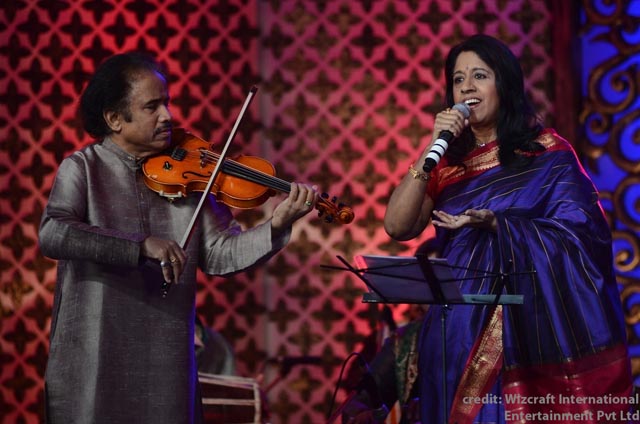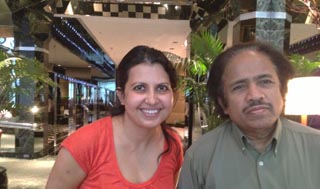
A Marriage of Carnatic and Hindustani Music
“New York is such a vibrant cultural city,” says Dr. L. Subramaniam, the master violinist. ” What I like most is that it’s receptive to all different kinds of music.” Indeed, that is the wonder of New York – the way it receives music from all over the world with open arms.
In fact, this is L. Subramaniam’s third concert here in a period of six months: the first was a global fusion concert at Lincoln Center, the second a collaboration with Stevie Wonder and now a classical concert at the Skirball Performing Arts Center on December 9. He will be sharing the stage with his wife, the noted playback singer Kavita Krishnamurti who will be presenting a new repertoire with some classics.
Another special thing about New York City is the constant confluence of music lovers, promoters and music groups, coming together for enriching music concerts. South Asian Music & Arts Association (SAMAA) is one such nascent group passionate about spreading the notes of Indian music throughout the city.
Iconic Carnatic-style violinist Dr. L. Subramaniam and Hindustani-style vocalist Kavita Krishnamurti Subramaniam will perform together in concert; they will be accompanied by Mahesh Krishnamurti, Anirban Roy Chowdhary and Rohan Prabhu Desai, playing the mridangam, tabla and harmonium, respectively. The concert will close with Jon Weber on keyboard, presenting a fusion of Hindustani, Carnatic and western music.

“This concert is special to me as it has all the elements that SAMAA wants to promote, i.e classical, semi-classical and fusion,” says its founder, Simmi Bhatia. “It will be the marriage of classical and Bollywood, Carnatic and Hindustani in a way so as to appeal to all audiences from young to old, from South Asian to Westerners, without compromising on classical music.”
More details at http://www.samaa.us
L. Subramaniam talks about the Violin:
“It is my great privilege that my Guru Shishya Parampara (master-disciple tradition) lineage can be traced back to Baluswamy Dikshitar who was responsible for introducing and adapting the violin to Indian music in the early 19th century. Within a short time, it replaced other instruments like the veena, which were used to accompany vocal performances and became the primary accompanying instrument in the Carnatic tradition. This was a welcome precedent, and it helped other accompanying instruments like the flute to gain prominence too.
My generation has seen the Indian violin rise to an international status as a solo instrument on par with the Western violin; adapted and featured as a solo instrument with major symphony orchestras and chamber groups (both classical and neo-fusion). This has opened up a wide range of possibilities and new avenues on the international scene for the Indian violin.”
Related Article:
